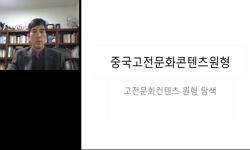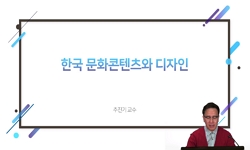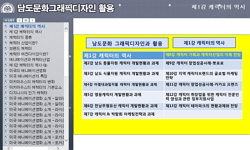隨著經濟的發展和人們物質水平的提高,余假生活越來越受到人們的重視。來越多的人開始追求高品質的余假生活,爲滿足人們對余假生活需求,主題公園産業也得到迅速發展。主題公園作&#...
http://chineseinput.net/에서 pinyin(병음)방식으로 중국어를 변환할 수 있습니다.
변환된 중국어를 복사하여 사용하시면 됩니다.
- 中文 을 입력하시려면 zhongwen을 입력하시고 space를누르시면됩니다.
- 北京 을 입력하시려면 beijing을 입력하시고 space를 누르시면 됩니다.
역사 문화원형을 활용한 역사테마파크 콘텐츠 연구 : 항저우(杭州) 송성(宋城) 테마파크 사례로 = Analysis and Research on Contents of Historical Theme Park of Flexible Use of Historical and Cultural Prototype : by taking Songcheng theme park in Hangzhou as the center
한글로보기https://www.riss.kr/link?id=T14572411
- 저자
-
발행사항
서울 : 건국대학교 대학원, 2017
-
학위논문사항
학위논문(석사)-- 건국대학교 대학원 : 문화콘텐츠·커뮤니케이션(학과간)학과 문화콘텐츠학전공 2017. 8
-
발행연도
2017
-
작성언어
한국어
- 주제어
-
발행국(도시)
서울
-
형태사항
73 ; 26 cm
-
일반주기명
지도교수: 이병민
- 소장기관
-
0
상세조회 -
0
다운로드
부가정보
다국어 초록 (Multilingual Abstract)
隨著經濟的發展和人們物質水平的提高,余假生活越來越受到人們的重視。來越多的人開始追求高品質的余假生活,爲滿足人們對余假生活需求,主題公園産業也得到迅速發展。主題公園作為一種人造旅遊資源,圍繞著一個或幾個主題創造一系列有特別的環境和氣氛的項目吸引遊客。曆史主題公園是主題公園的一個分支,通常依托區域的曆史文化底蘊,將主題曆史文化作爲公園的靈魂與核心。曆史主題公園其本質是曆史文化資源的再創造,用適當的方式將現有的曆史資源表達出來。作爲傳承曆史文化的載體,不僅增加了人們的興趣而且提高了曆史可信度。比較其他類型的主題公園具有深刻教育意義。曆史文化主題公園將曆史記載資料和文化原型作爲重要素材和原料提煉、加工、設計、組合成可供旅遊者參觀、參與的旅遊産品,即對文化旅遊資源的整合開發過程。一個成功的主題公園必須有鮮明與獨特的主題,主題的塑造通過其中主題公園景觀設置展現出來,所以如何挖掘曆史文化資源的素材進行再加工和創造, 産出新的文化內容, 很大程度上影響著主題公園的開發經營能否成功。
本文以曆史文化主題公園爲著手點,站在發展的角度,探究主題公園中曆史資源與文化如何適用,傳承與表達。本文首先透過先行研究發現其中存在的問題:欠缺對曆史文化主題公園曆史文化資源活用理論層面的研究,進而提出本課題研究的目的。其次,將曆史文化主題公園,曆史資源,敘事相關理論爲根據,通過位於中國杭州的宋城主題公園的調研,詳細的對主題公園進行分析,闡述事例曆史文化資源是如何被活用被體現在曆史主題公園景觀中,表明曆史文化資源表現方式,並總結事例的經驗與不足,提出改善建議。最後總結出曆史文化主題公園景觀中曆史文化內容表達的原則。爲曆史文化主題公園的建設發展提供有益的借鑒與幫助。
다국어 초록 (Multilingual Abstract)
With the development of economy and improvement of people’s material level, holiday leisure life has attracted more and more attention from people. More and more people start to pursue holiday life of high quality. To meet the demand of people for h...
With the development of economy and improvement of people’s material level, holiday leisure life has attracted more and more attention from people. More and more people start to pursue holiday life of high quality. To meet the demand of people for holiday life, theme park industry develops rapidly. Theme park is a kind of artificial tourism resource, which attracts tourists with a series of programs with special environment and atmosphere. As a branch of theme park, historical theme park usually takes theme historical culture as the soul and core of the park based on regional historical and cultural heritage. The essence of theme park is the recreation of historical and cultural resources, which expresses existing historical resources in a proper way. As the carrier of inheriting historical culture, it not only increases people’s interest, but also improves the credibility of history. It is with more profound teaching significance than other types of theme park. Historical and cultural theme park takes historical records and cultural prototype as important materials and raw materials to extract, process, and design, combine tourism products that can be viewed and participated by tourists, which is the integration and development process for cultural tourism resources. A successful theme park must have distinctive and unique theme. The theme shaping is presented through the content of theme park. Therefore, how to explore the materials of historical and cultural resources to process and create new cultural contents affects the success of development and operation of theme park to a great extent.
This paper takes historical and cultural theme park as the starting point and explores how to apply, inherit and express historical resources and culture in theme park from the perspective of development. Firstly, this paper discovers existing problem through prior research that it lacks theoretical research on flexible use of historical and cultural resources for historical and cultural theme park, and then it proposes the objective of this subject research. Secondly, it takes historical and cultural theme park, historical resources and related narrative theories as basis, analyzes the content of theme park in details through investigation on Songcheng theme park in Hangzhou city of China, elaborates how does historical and cultural resources used and presented in historical theme park landscape flexibly, indicates express forms of historical and cultural resources, summarizes experience and shortage and then proposes suggestions for improvement. Finally, it summarizes the principles of historical and cultural content expression in historical and cultural theme park landscape and provides helpful reference and assistance for the construction and development of historical and cultural theme park.
국문 초록 (Abstract)
경제가 발전하고 사람들의 물질적 생활수준이 향상됨에 따라 여가생활이 점차 생활에서 차지하는 비중이 높아졌다. 여가 생활자체보다 현대 사람들은 양질의 여가생활을 원하게 되었고, 이...
경제가 발전하고 사람들의 물질적 생활수준이 향상됨에 따라 여가생활이 점차 생활에서 차지하는 비중이 높아졌다. 여가 생활자체보다 현대 사람들은 양질의 여가생활을 원하게 되었고, 이러한 대중들의 수요를 만족시키기 위하여 테마파크 산업도 빠르게 발전하게 되었다. 테마파크는 인공 관광자원으로 하나 또는 몇 개의 주제를 중심으로 특별한 환경과 분위기가 있는 일련의 놀이시설, 공연 등을 창조함으로써 관광객들을 유치하여 이윤을 창출하는 것을 목적으로 한다. 역사 테마파크는 테마파크의 한 갈래로서 지역의 역사문화 분량에 의지하여 어떤 역사문화의 주제를 공원의 핵심주제로 정한다. 테마파크는 공간형 콘텐츠로서 그 본질이 역사문화 자원의 재창조이며 적당한 방식으로 기존의 역사 자원을 나타내기 때문에 어느 정도 문화 홍보효과도 있다. 전통적인 역사문화를 전승하는 것으로 테마파크는 사람들의 흥미를 유발할 뿐만 아니라 역사의 신뢰도를 제고하여 다른 유형의 테마파크에 비하여 뜻 깊은 교육적 의의를 지닌다. 역사문화 테마파크는 역사기록 자료와 문화 원형을 중요한 소재와 자료로 하고 그것들을 관광객들이 참관하거나 참여할 수 있는 관광 상품으로 다듬어 가공하고 디자인·조합하는 과정을 거친다. 이를 문화 상품 개발 과정으로 정의할 수 있겠다. 하나의 성공한 테마파크는 뚜렷하고 독특한 테마가 있어야 하고 테마의 부각은 그 테마파크의 콘텐츠를 통해 나타난다. 따라서 어떻게 역사문화 자원의 소재를 발굴하여 재가공을 진행할 것인가와 새로운 콘텐츠를 창출할 것인가가 테마파크 개발·경영의 성공여부에 큰 영향을 주는 것은 당연하다.
본 연구는 역사문화 테마파크를 중심으로 발전의 각도에 입각하여 테마파크에 있어서 역사자원과 문화가 어떻게 적용되고 전승되며 표현될 것인지 탐구하고자 한다. 우선, 본고는 선행연구를 통하여 역사문화 테마파크의 역사문화 자원을 활용하는 이론적 연구가 부족하다는 문제점을 발견하고, 나아가 본 연구과제의 목적을 제시할 것이다. 다음으로, 역사문화 테마파크, 역사자원, 관련된 이론에 기초하여 항주(杭州)의 송성(宋城)테마파크에 대한 조사연구를 통해 테마파크 콘텐츠를 상세하게 분석하여 사례의 역사문화 자원이 어떻게 활용되어 역사 테마파크의 경치에 나타나는지를 설명하고, 역사문화 자원의 표현방식을 밝히며, 또한 사례의 경험과 부족한 점을 총괄하여 개선방안을 제시할 것이다. 마지막으로, 역사문화 테마파크 경치에 있어서 역사문화 내용의 표현 원칙을 총괄함으로써 역사문화 테마파크의 기획, 개발에 유익한 참고와 도움을 제공할 것이다.
목차 (Table of Contents)
- 제1장 서론 1
- 제1절 연구배경 및 연구목적 1
- 1. 연구배경 1
- 2. 연구목적 3
- 제2절 연구내용 및 연구방법 3
- 제1장 서론 1
- 제1절 연구배경 및 연구목적 1
- 1. 연구배경 1
- 2. 연구목적 3
- 제2절 연구내용 및 연구방법 3
- 1. 연구내용 3
- 2. 연구방법 4
- 제2장 이론적 배경 6
- 제1절 역사문화 테마파크의 개념 및 분류 6
- 1. 역사문화 테마파크의 개념 6
- 2. 역사문화테마파크의 분류 6
- 제2절 역사문화테마파크의 특성 8
- 1. 주제성 8
- 2. 진실성 9
- 3. 교육성 9
- 4. 개발과 보호 병행 10
- 5. 참여성 10
- 6. 지역성 10
- 제3장 항주(杭州)송성(宋城) 테마파크 사례분석 12
- 제1절 사례분석을 위한 기초 12
- 1. 송(宋)나라 관련 역사와 민속 문화 12
- 2. 항저주 송성 테마파크 상황 18
- 제2절 송성테마파크를 통한 문화인지 정도에 대한 설문조사 20
- 1. 설문지 내용 20
- 2. 조사 방법 23
- 3. 주요 설문 내용 분석 23
- 4. 정리 26
- 제3절 송성테마파크 콘텐츠분석 27
- 1. 분석 방법 27
- 2. 정태적 콘텐츠 30
- 3. 동태적 콘텐츠 38
- 제4절 송성테마파크 콘텐츠 평가 53
- 1. 주제성 53
- 2. 진실성 54
- 3. 교육성 54
- 4. 창조성 부족 55
- 제5절 송성 테마파크 콘텐츠 개선 방안 56
- 1. 송문화의 주제성 강화 56
- 2. 역사 문화의 진실성 중시 56
- 3. 역사 문화 표현강화 57
- 4. 창의적 프로그램 개발 58
- 제4장 결론 59
- 참고문헌 63
- 부 록 65
- ABSTRACT 69
- 中文摘要 72












